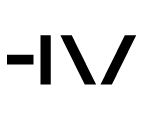OneFeltSwoop
Exploring Felt as a Material Assembly
OneFeltSwoop is a framework that allows for material to behave the way it wants to behave while taking cues from the way we operate digitally. It weaves in and out of the digital-analog interface, using felt as the explorative material of inquiry. The project questions the hierarchy that often suggests operating from digital to material, rather than material to digital (and back to material). It works in such a way that reflects the nature of scientific method. The separation of the material world and digital processes will inherently silo the way we understand and predict translation from immaterial to material, so this project finds ways to borrow from the logic of digital and embed it into an analog logic, vice versa. The project specifically investigated the properties of felt and how it could be transformed into an assembly. What emerged was an understanding of how a sheet material such as felt could be used in such a way as to create a three-dimensional unit.
Our digital toolbox has become so advanced that it is blurring the boundary between what is digital and what is physical. The physics and material parameters that we can embed into our digital models creates a hyper-precision to the extent that it can sometimes necessitate parameters that allow for unpredictability. In other words, the way we operate in the computer is so advanced that, in a lot of ways, we have defamiliarized our understanding of material behavior; dis-privileging the learning we can experience through analog work flows.
Precision of digital simulation and representation of physical attributes intend to minimize friction in margin of error, but instead continue to reinforce the autonomy of digital precision and material contingency. The reinforcement happens with digital fabrication. It’s common for us to explore parts of the material world, but we quickly move to modalities that have the capacity to digitally fabricate or catalog, as if it is meant to validate the inquiry at hand. Working this way creates a hierarchy that favors digital over material-analog. The aesthetic of translating digital to physical demands a large amount of control, at the expense of allowing the material to behave the way it wants to behave. Whether it fails to react the way we intend for it to, or in a way we never would have anticipated or planned for, the ubiquity of digital processes encourages the separation of digital and physical at the expense of allowing material to possess its natural contingencies. OneFeltSwoop works in a way that minimizes the privilege of the digital interface and instead works discursively between digital-analog environments.












